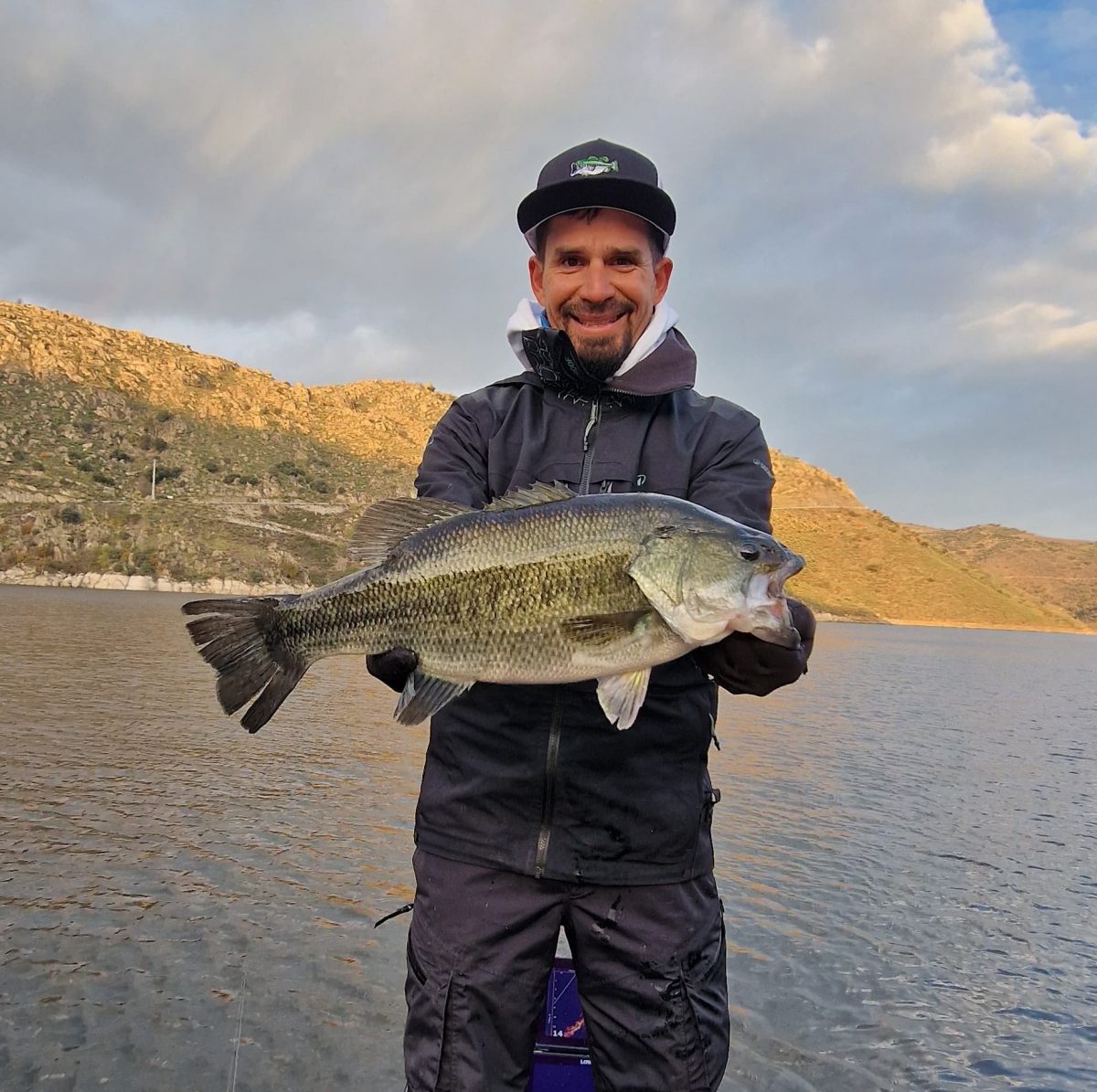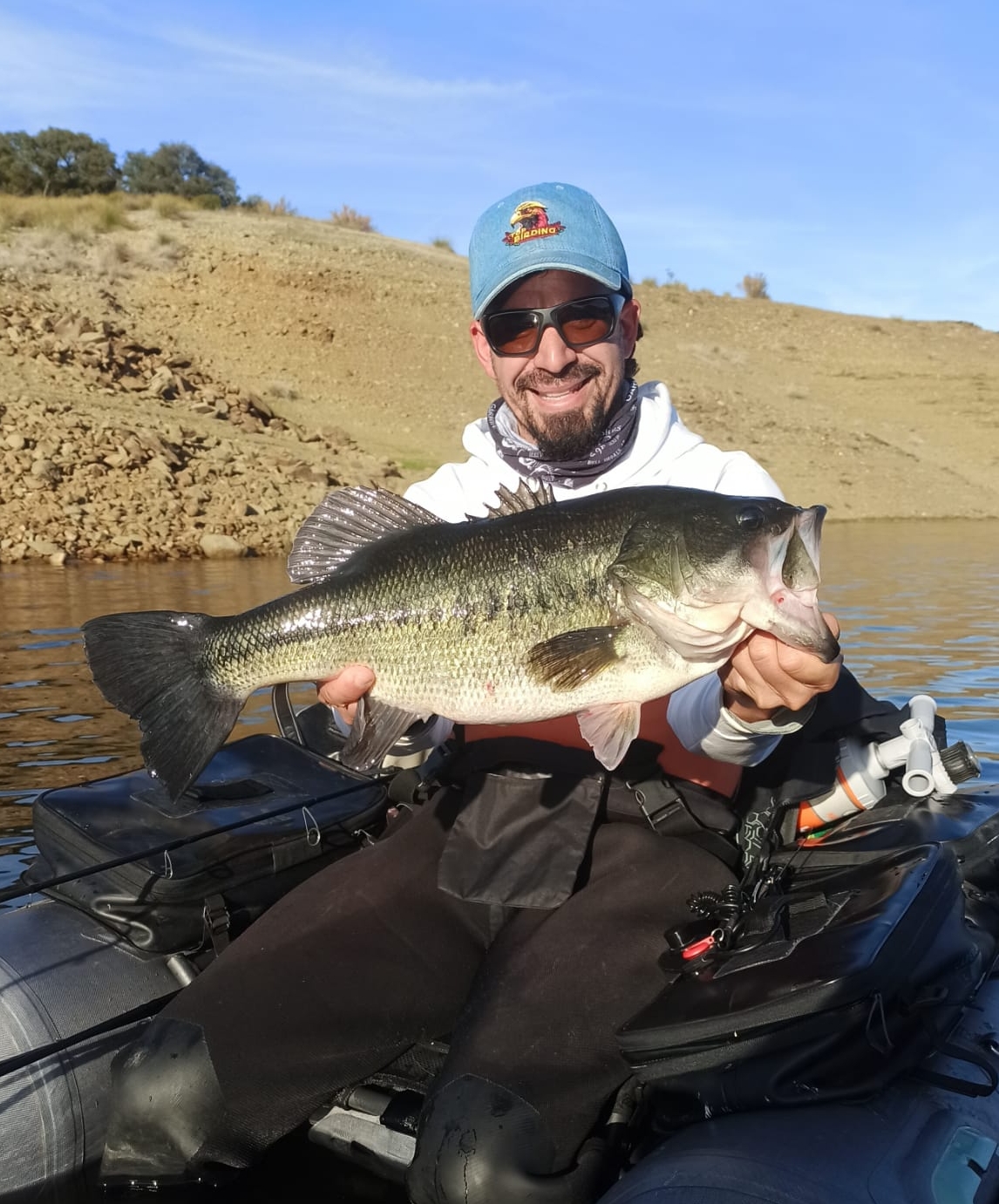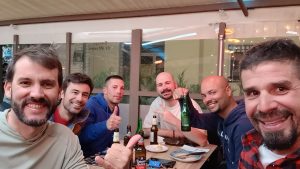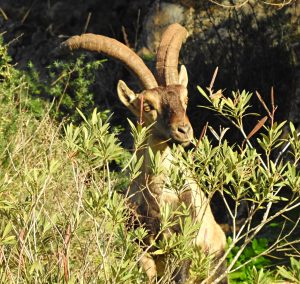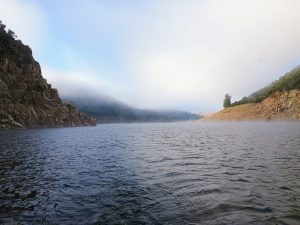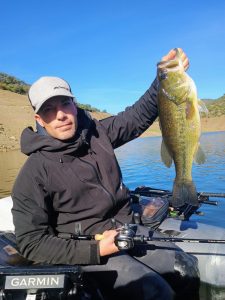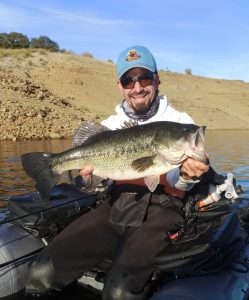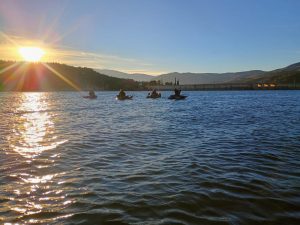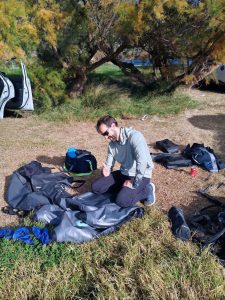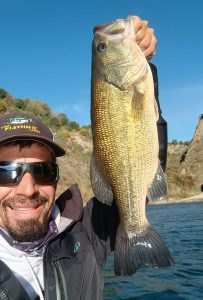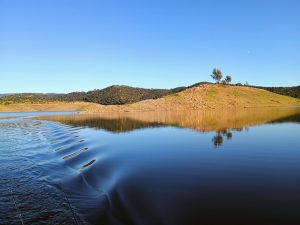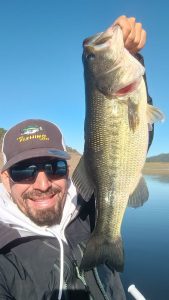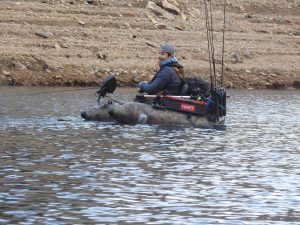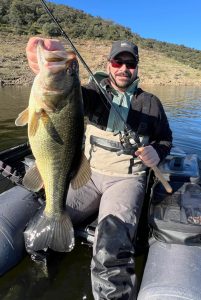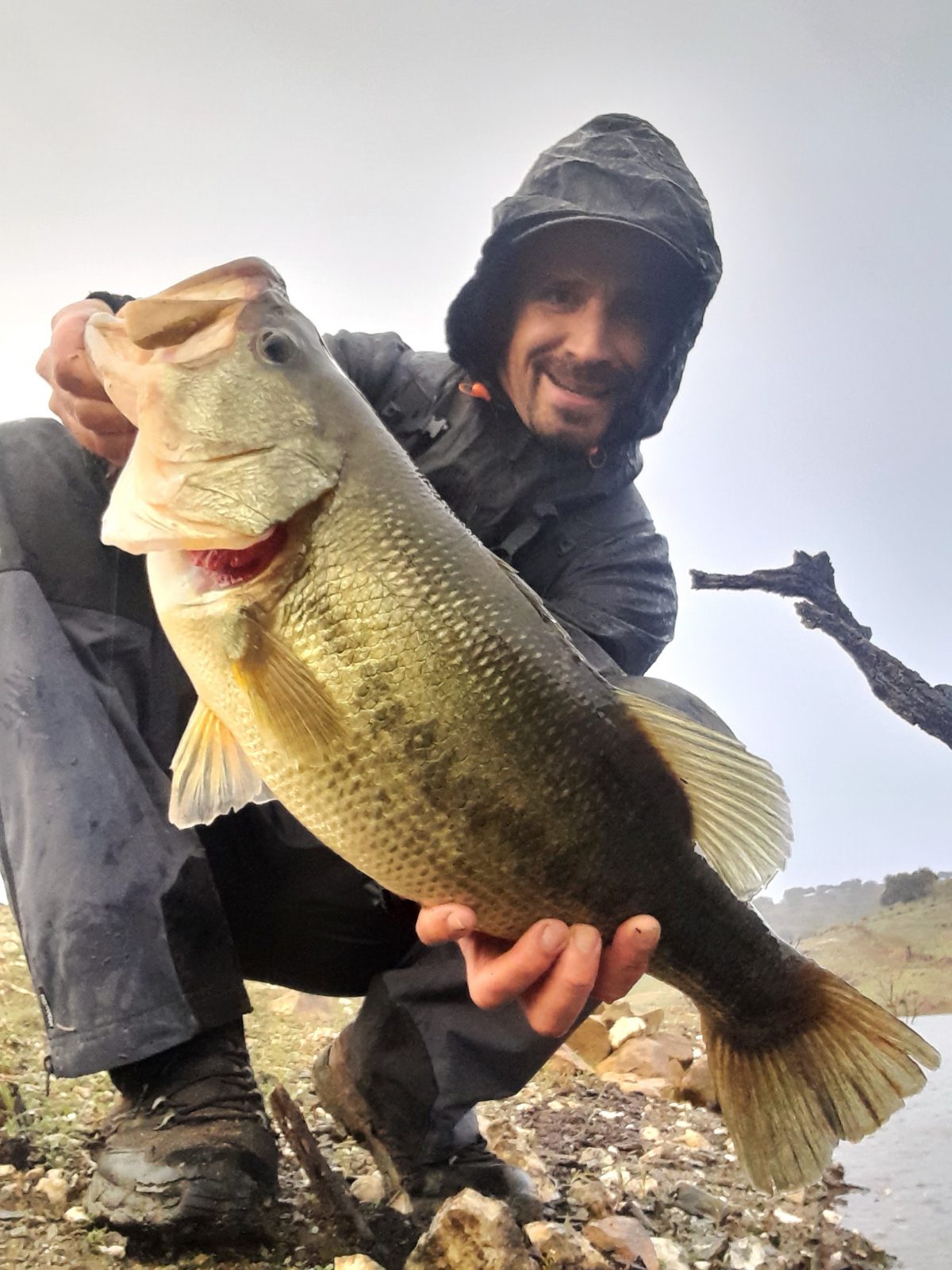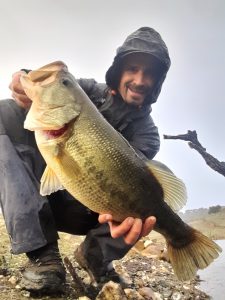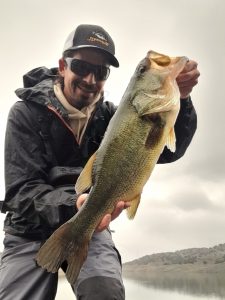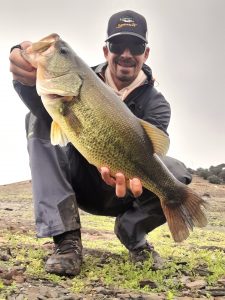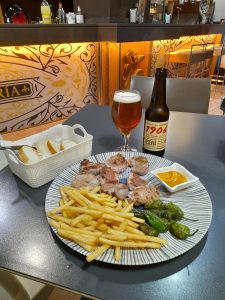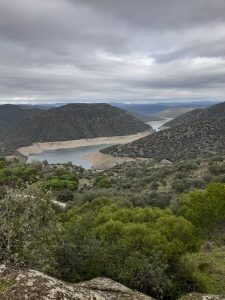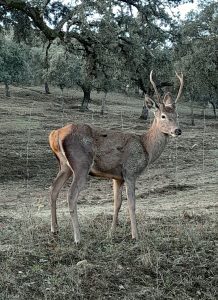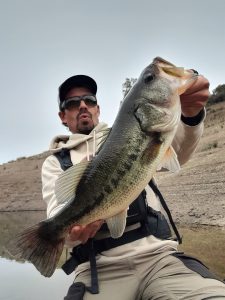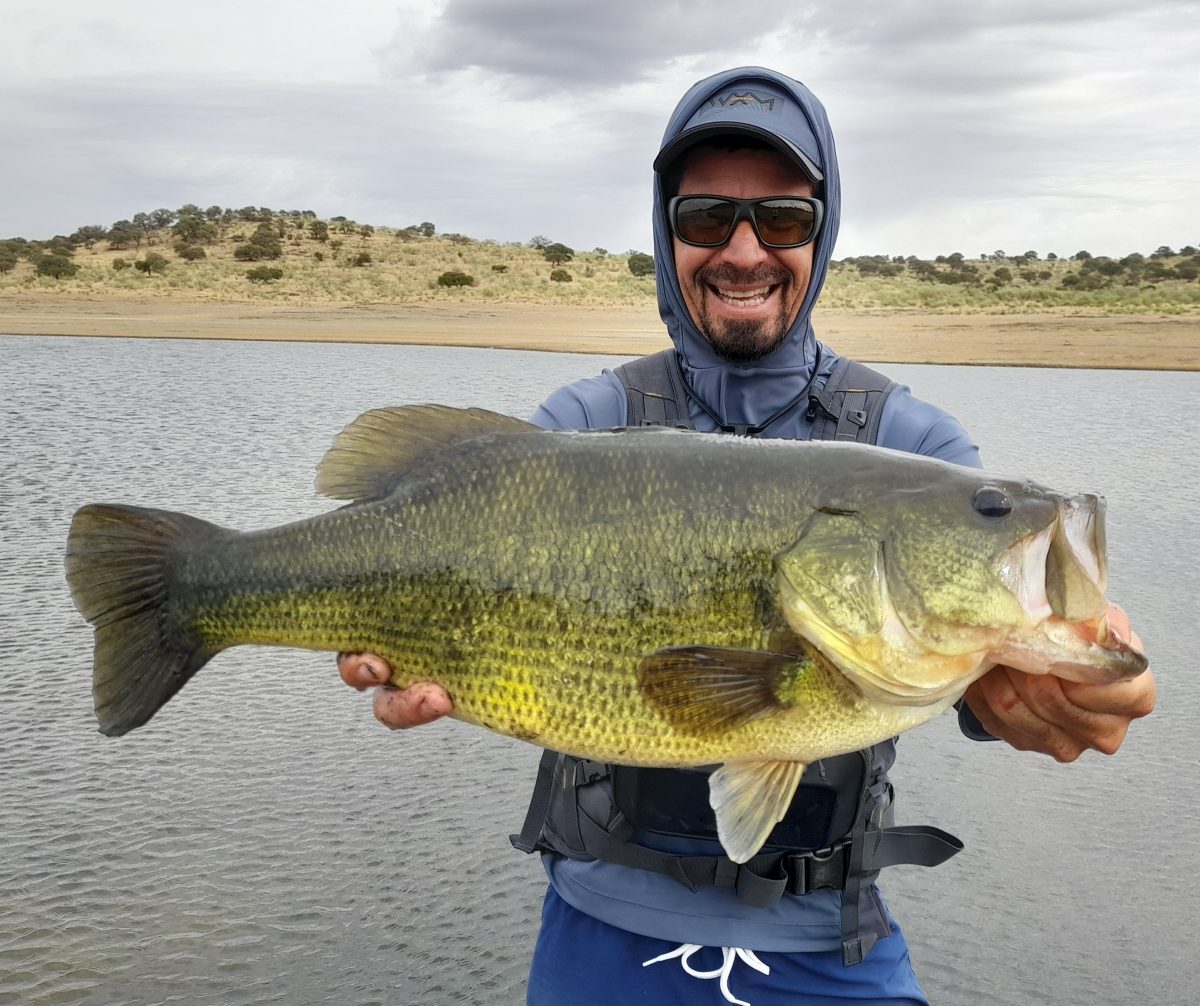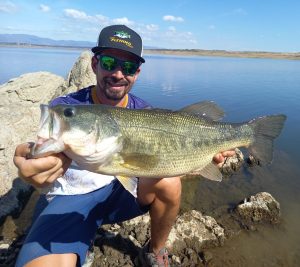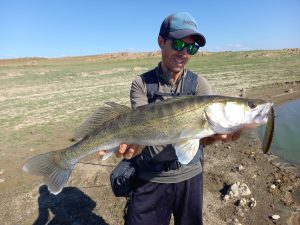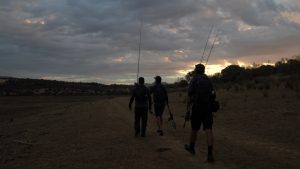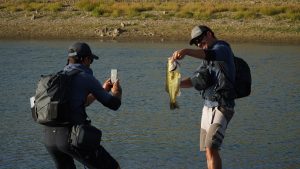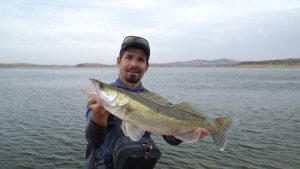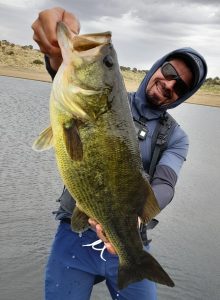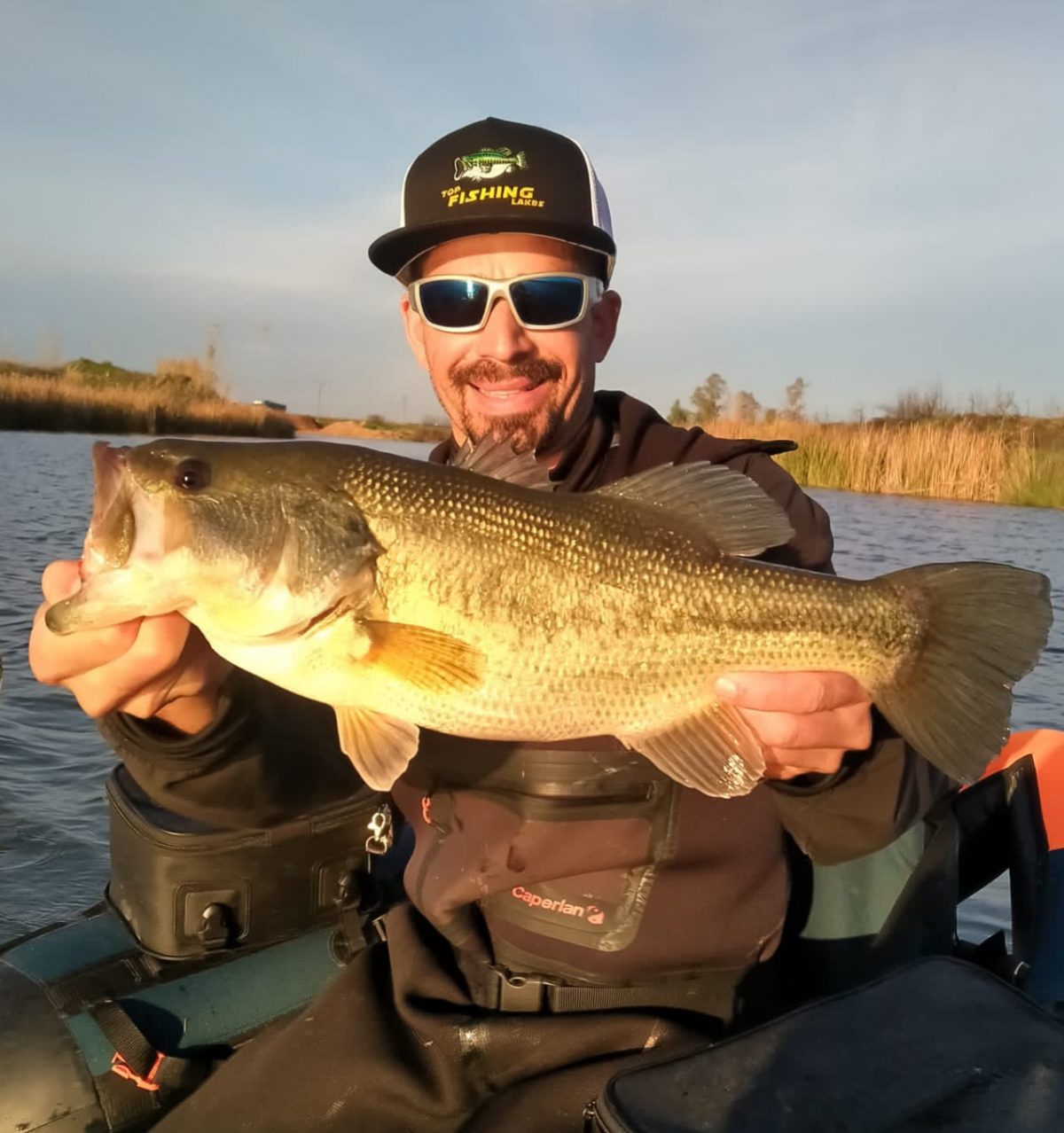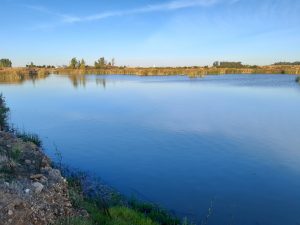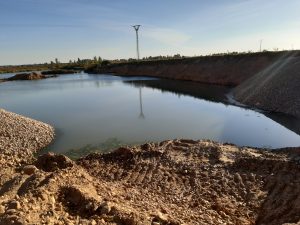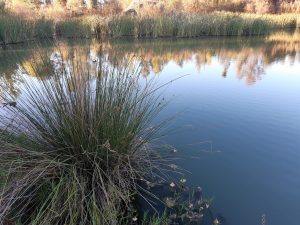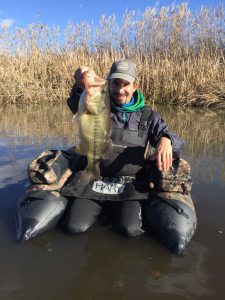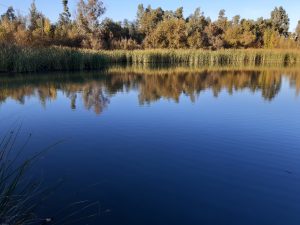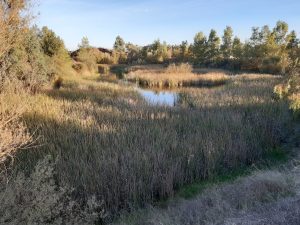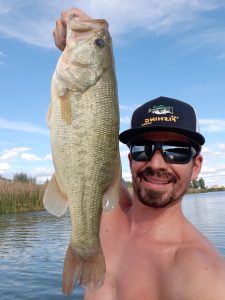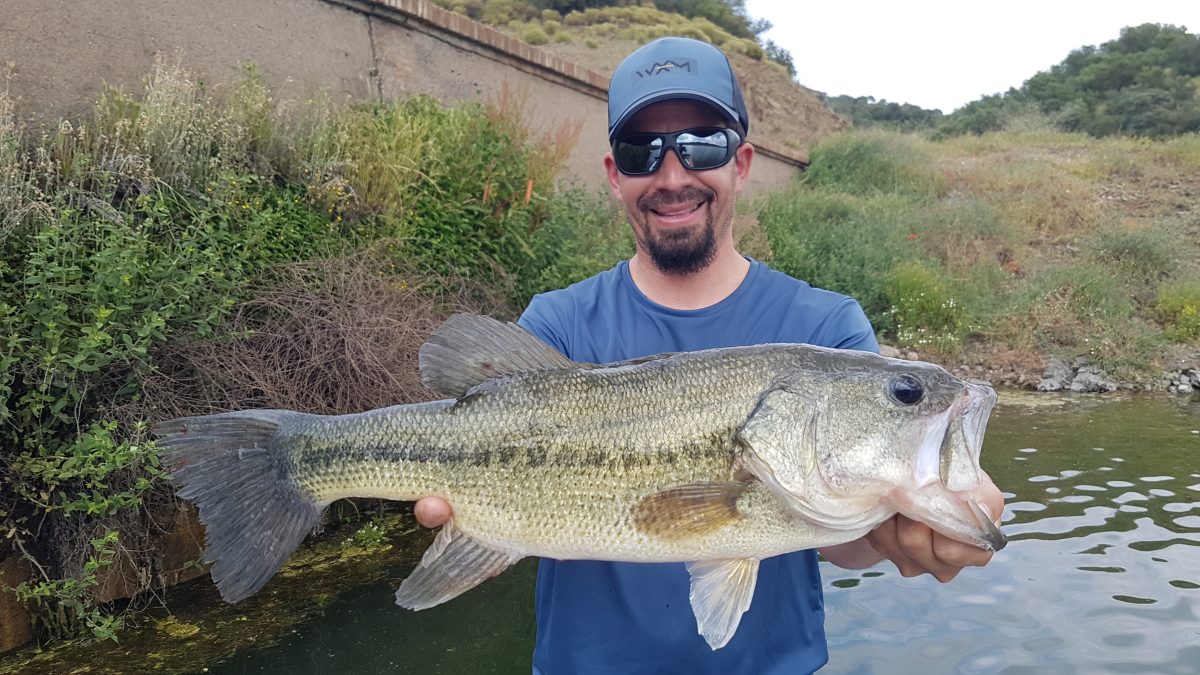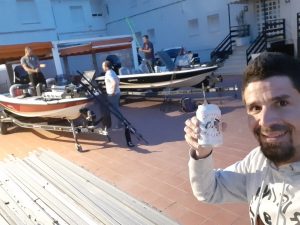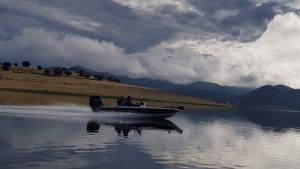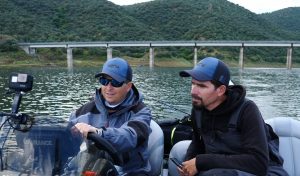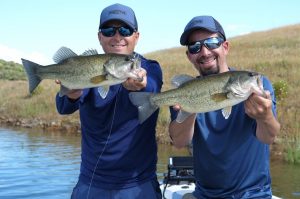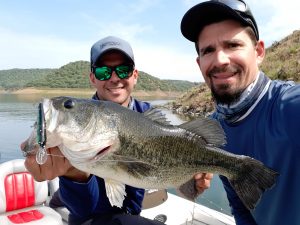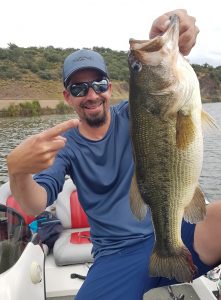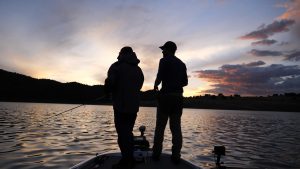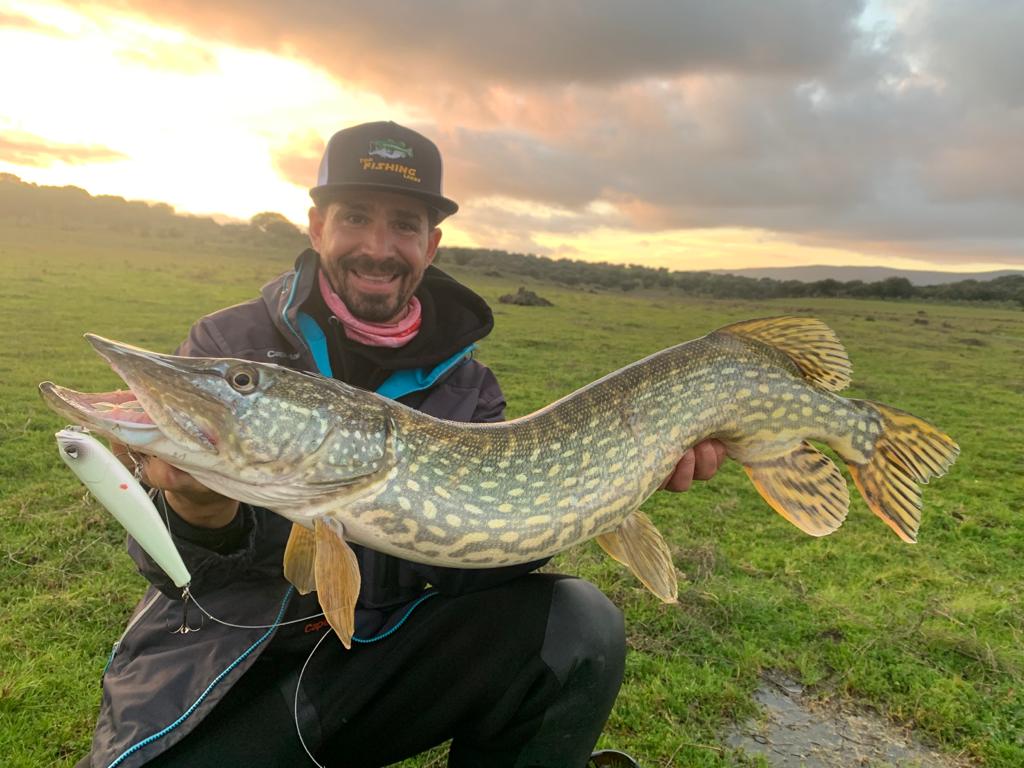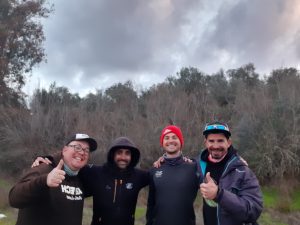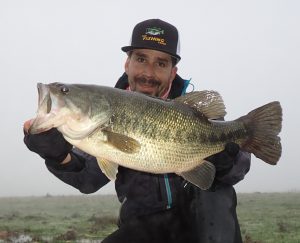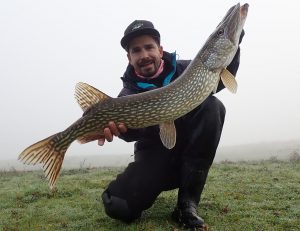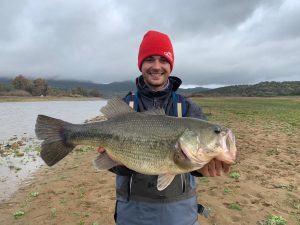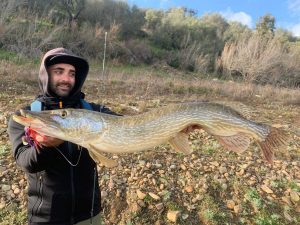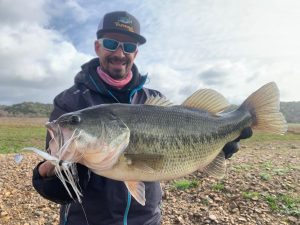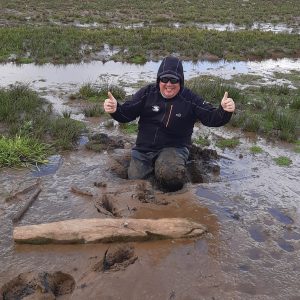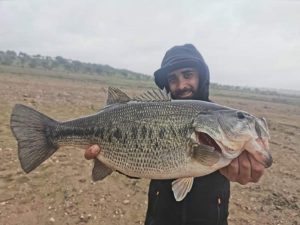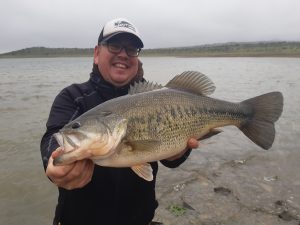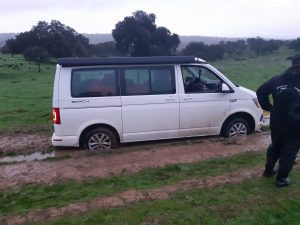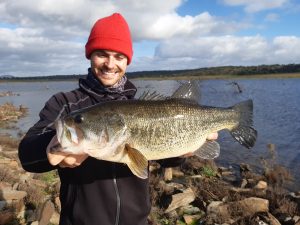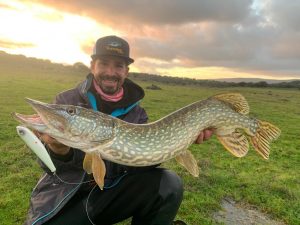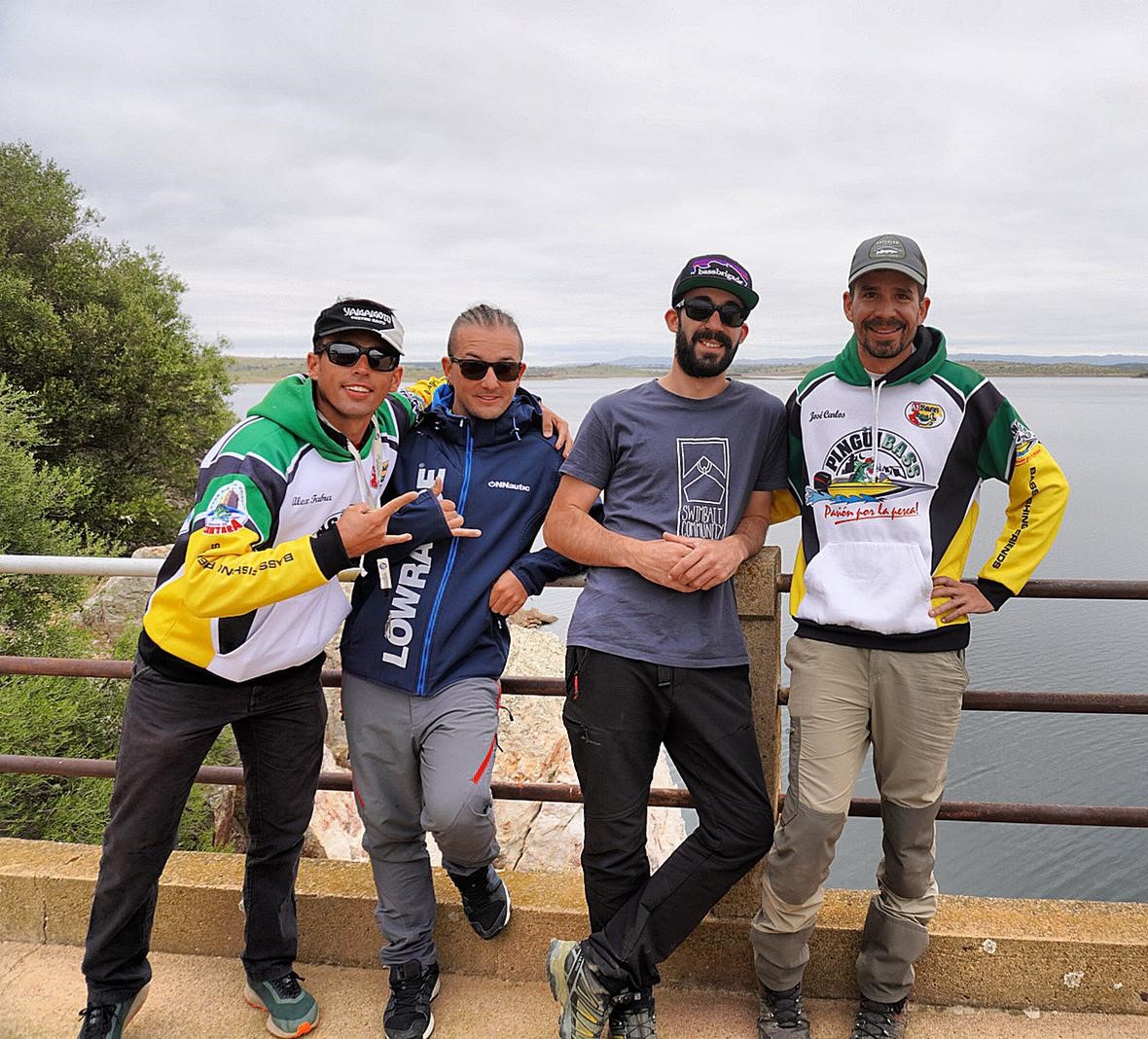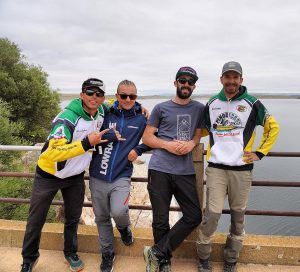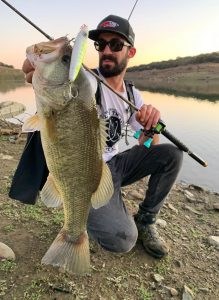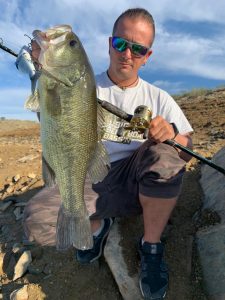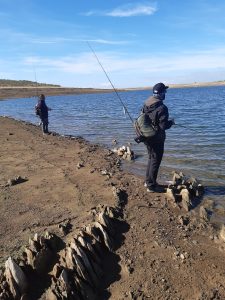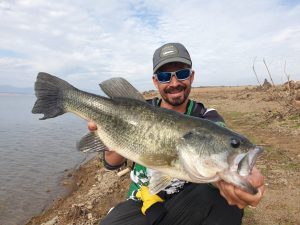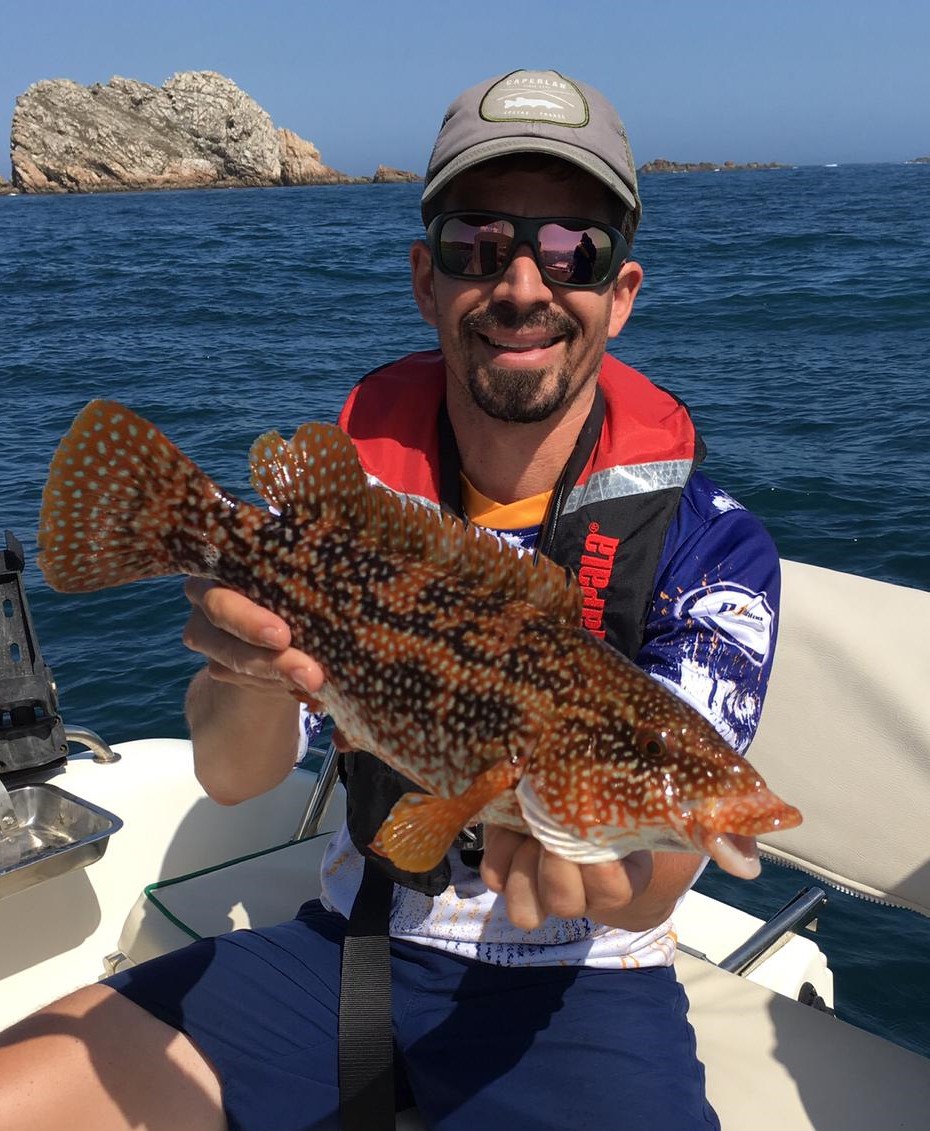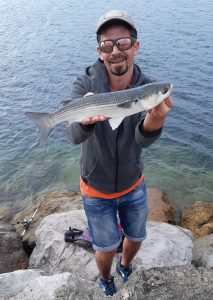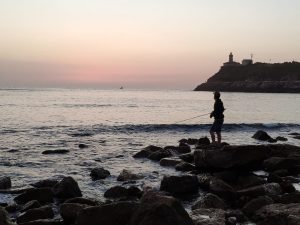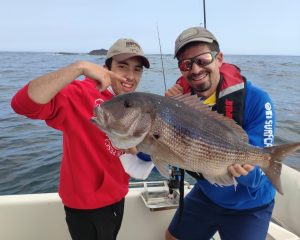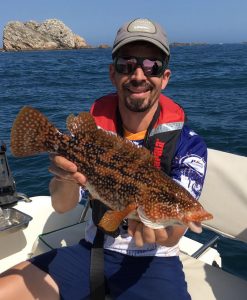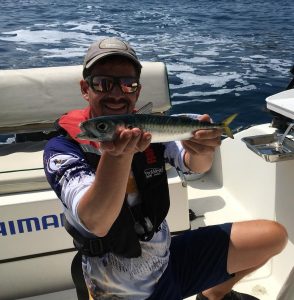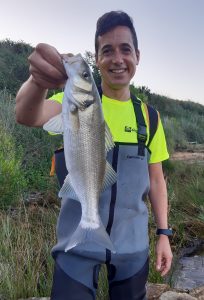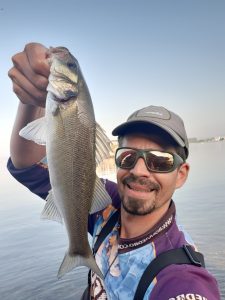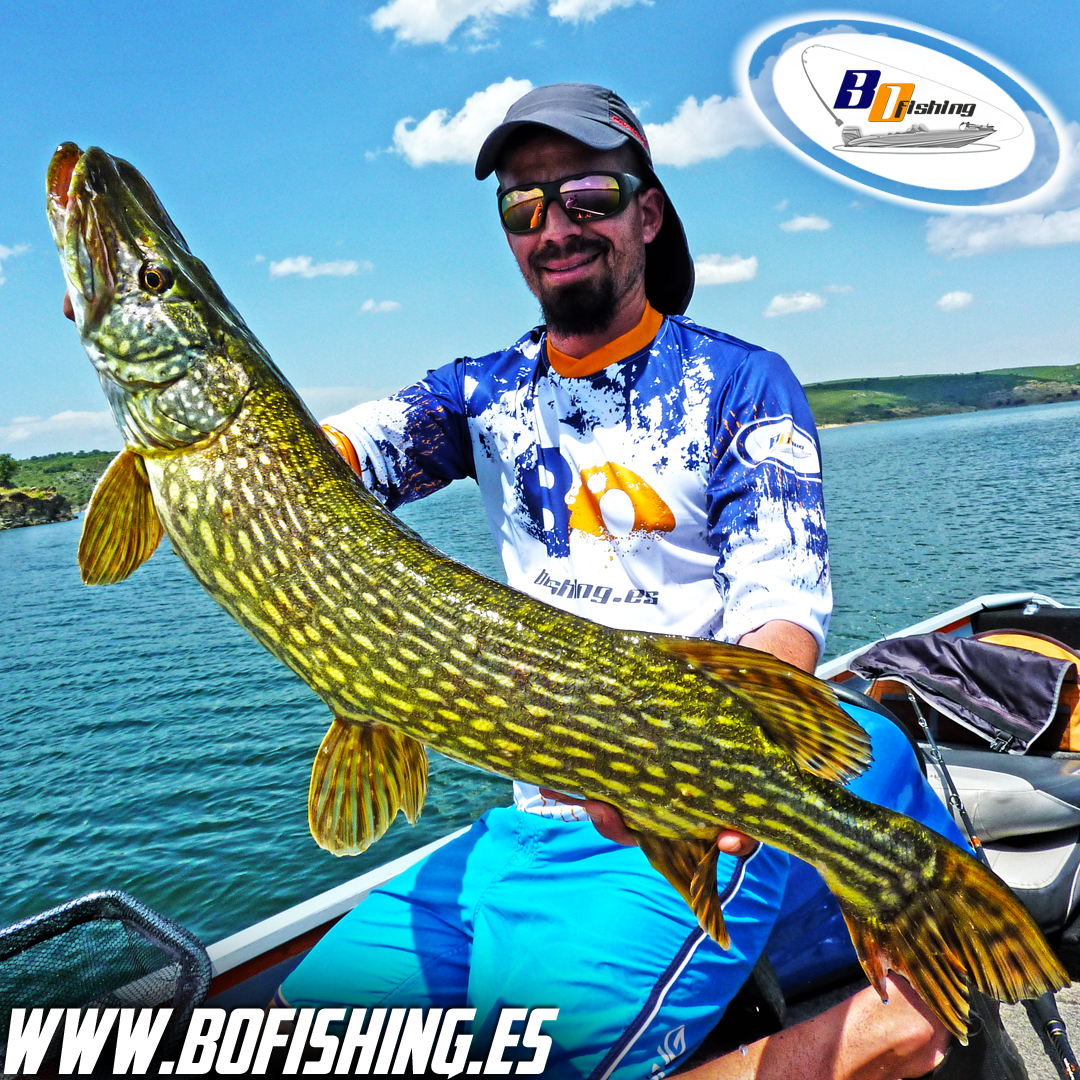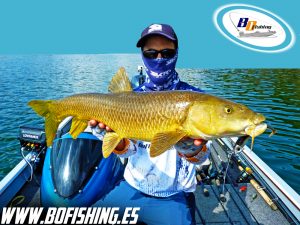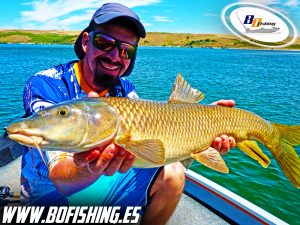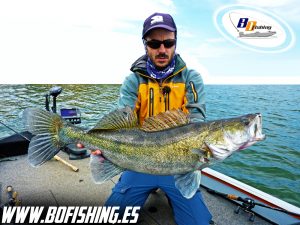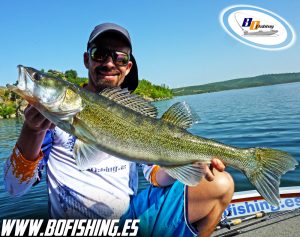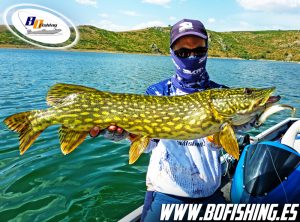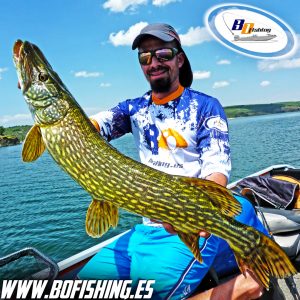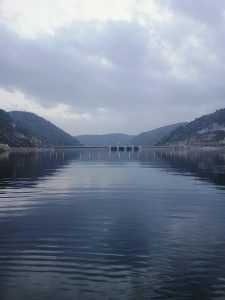
Do you know Sabor lake in Portugal? If you are a black bass lover or predator fishing lover in general, Sabor lake is one of the reference lakes in Europe today. In fact, in 2023 the black bass world championship was held there, with very good results.
I will now describe the reservoir in broad strokes, as I was lucky enough to accompany my good friend Joao for a couple of winter days. I would like to take this opportunity to thank you for the good days we spent, my friend. Although we were in December and it was quite cold, we had a lot of fun and I think it is a reservoir worth visiting at this time.
Characteristics of Sabor lake
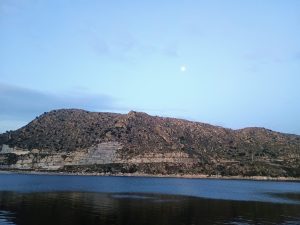
Sabor lake is a recently created reservoir (2014) with a capacity of 630 hm3. When it is at 100% it has a surface area of 8420 hectares and its conditions are ideal for predators. It does not usually present abrupt level changes and its banks are very steep. The waters are quite clear and it has all kinds of structures and cover. In many flood zones the trees have not been cut down, making them an excellent refuge for fish.
Bottom composition and structures
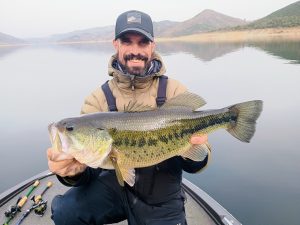
It is located in a geologically very rich area, presenting all types of rocks: quartzites, schists, sedimentary rocks such as sandstones and shales and some granites… In general, it is a very steep reservoir with steep slopes and very marked structures. We have many points, cutting areas… and some beaches but in general with quite steep slopes.
Both the area of the dam and the main channel of the Sabor river from the creek to the middle section are quite steep areas. Here there is a predominance of steep cliffs with some peaks and small creeks. The central zone of the lake has fewer cuts but is also quite steep. Here we will find banks with more moderate slopes, some beach areas and several large creeks.
Vegetation and cover, Sabor lake
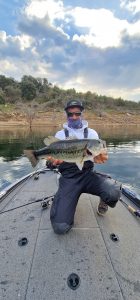
The prevailing steep slopes mean that there is not much underwater vegetation. However, there are many submerged trees and shrubs of all sizes. We have an area with pines and eucalyptus, but mainly olive and oak trees predominate. There are also some other trees such as ash and cork oaks. But what is really interesting is that most of them were not cut down when the reservoir was flooded and we can find them practically at all depths.
On the other hand, there are also many rockroses, brooms and other bushes. The fact that the reservoir was created recently also contributes to the fact that the structure of these trees and bushes is practically intact, as they have not had time to rot.
Main fish species
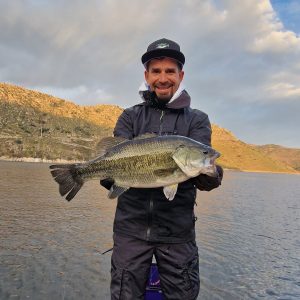
Although we have common barbel, pike and zander, the predominant species is black bass. Like all reservoirs in their first years of flooding, food is plentiful and the fish are reaching very considerable sizes.
- Black bass. Specimens weighing more than 3 kilos have been caught and there have been many catches weighing more than 2 kilos. They have a very healthy morphology, very plump and we can find really big shoals.
- Common barbel. Inhabitant of the Sabor River before the creation of the reservoir, there is still an interesting density of it. The high density of baitfish makes it quite predatory.
- Pike. It is not a particularly abundant predator, as there are not many suitable areas for spawning. However, there are some really big specimens, having been caught pike weighing almost 20 kg.
- Zander. There is a good population, and really big specimens have also been caught.
Baitfish in Sabor lake
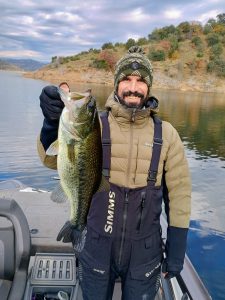
Taste is one of the few reservoirs in the western half in which roach (gardon) is present. The rutile is a medium-sized cyprinid, with a lot of fat which makes it an excellent food. The combination of the gardon together with the bleak provides predators with a virtually unlimited food source.
On the other hand, there are also crawfish, although not too many, and carp are also present.
Access and navigation
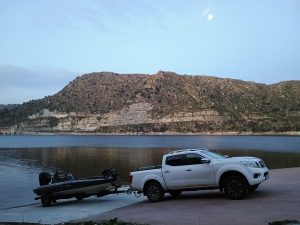
The reservoir is very confined, so fishing it from the shore is quite complicated. Even so, there are a few accesses (not many) from which you can fish from the shore, but the ideal would be to fish it from a float tube or boat. To launch the boats there is a concrete ramp at the dam, near the municipality of Torre de Moncorvo, through which you can perfectly launch any type of boat. To launch the float tube, there are several paths that end very close to the water.
It is important to have the Portuguese fishing license in force and of course all the papers of the boat, insurance, etc in order. To obtain the fishing license of Portugal we will have to do it in person, and the nearest place would be Guarda, although we could also do it in the city of Bragança. The place would be the ICNF (Instituto da Conservação da Natureza e das Florestas).
On the other hand, if you want to hire a fishing guide or need equipment, Francisco Morais is the person you are looking for. He has a great store in the village of Torre de Moncorvo and has been offering an excellent guide service for several years.

